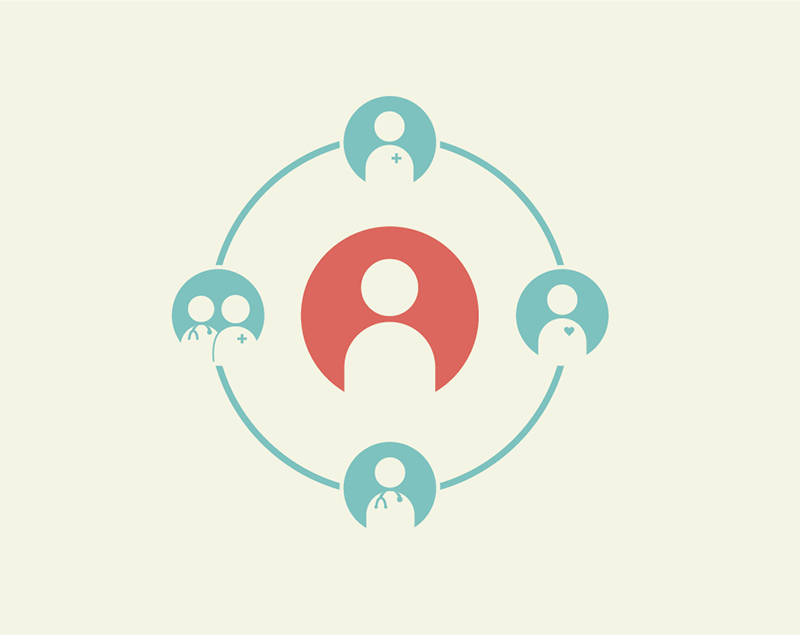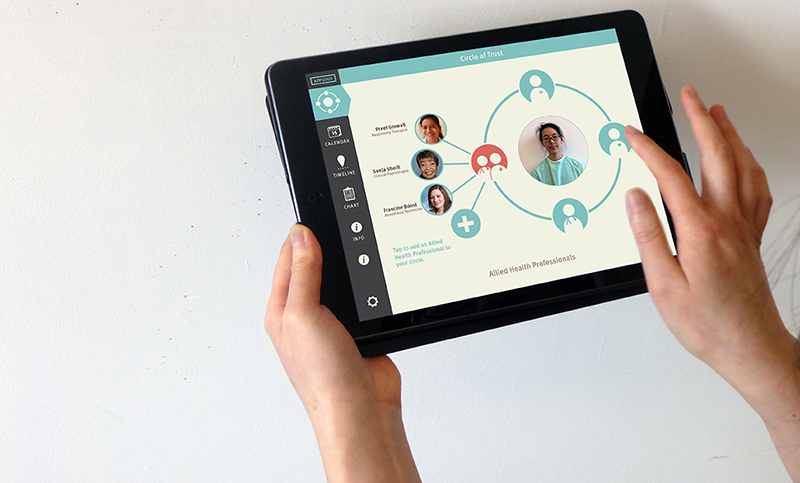Fraser Health Partnership: Keeping Patients Safe
by Health Design Lab
Graduation year: 2015
The Keeping Patients Safe campaign is the result of Emily
Carr’s 2013/14 partnership with BC’s largest health authority, Fraser
Health, on their initiative
Keeping Patients Safe, a project aimed at developing new ways to enhance patient safety across FH care facilities.
Keeping Patients Safe aims to change the culture of safety in hospitals by providing the tools for patients and care teams to work collaboratively towards improved safety. Keeping Patients Safe is based on innovative co-creative design research methodologies in which Emily Carr researchers worked directly with Fraser Health staff and patients to devise solutions. The resulting campaign includes a safety briefing video, a tablet based App for patients, and designs for facility-wide interactive smart boards.
“Patients First aims to change the culture of safety in hospitals by providing the tools for patients and care teams to work collaboratively towards improved safety.”
The Research Process
In order to best understand the inner workings of care facilities such as those at Fraser Health, our team took great care in learning from those individuals working in the field. We conducted co-creation sessions with various members or the public and the FH staff (from hospital administrators, to RNs, to managers), ethnographic probes with current patients, and phone interviews with current physicians at Fraser Health.

To reduce the rate of infection, falls, and medication errors within the hospital, patient engagement and interaction was key. We visualized this shift in the culture of healthcare using a Circle of Trust, which puts the patient at the centre—recognizing the patient as an essential component in his/her own health care. Ultimately, the Circle of Trust encourages an open dialogue between nurses, doctors, and patients.

Through our research, it also became evident that the topic of patient safety in hospitals was not limited to the walls of healthcare facilities. The factors extend beyond hospitalization to include the education and attitudes of caregivers to the protocols surrounding patient discharge and aftercare. The goal of the project was to change the culture of safety in the hospital and provide tools to encourage open dialogue between doctors, nurses, and patients.
Design Outcomes
The proposed design outcomes of this project took three main directions:
Safety Briefing Video: This video is intended to educate the patient on proper safety protocols in the hospital and to emphasize the role of the patient in his/her own care. The goal of the video is not only to educate, but also to encourage the establishment of positive interactions between the nurses and patient.
Interactive Smart Boards: The goal of the Smart Boards was to provide a communication touchpoint between the patient and care providers. Each patient would have their own personalized Smart Board that would display up-to-date schedules and alerts. The Smart Board also acts as a message board for the patient and his/her friends and family. While the patient Smart Boards are private and personalized, they can also be implemented across the healthcare facility as a networked system of communication. These public Smart Boards would provide more general hospital information based on the context of the location.

Bedside Patient App: The iPad app is provided as a tool
to empower and encourage the patient to become more engaged in his/her
healthcare. The goal is to lend some transparency to the hospital stay,
with the patient’s scheduled appointments and visit clearly displayed in
the calendar, while capturing the emotional aspects of being a patient.
The app functions as a hub for all the patient’s appointments and
visits, and provides a clear picture of the care team. There is
potential for integrating into future EMR systems to provide up-to-date
and accurate medical history for both patient and physician reference.

